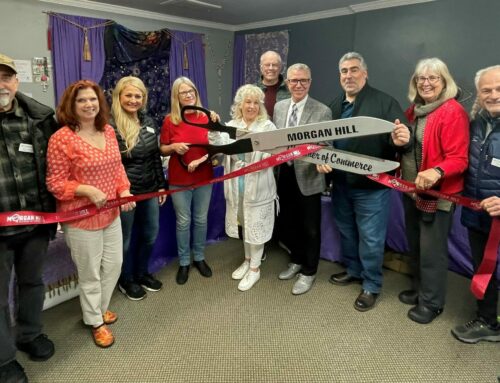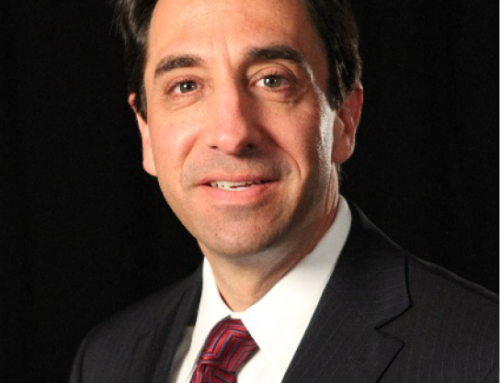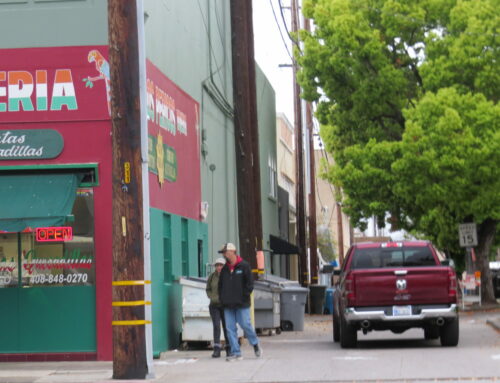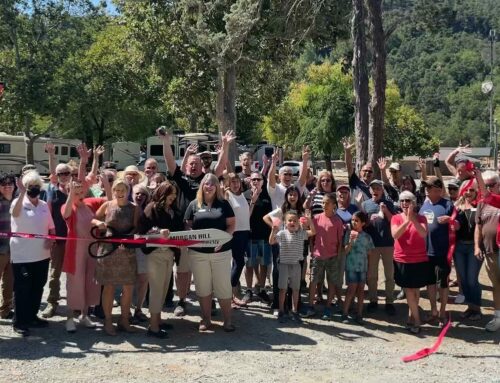Senator pushing for funding for student housing at Gavilan College
![]()
By Calvin Nuttall
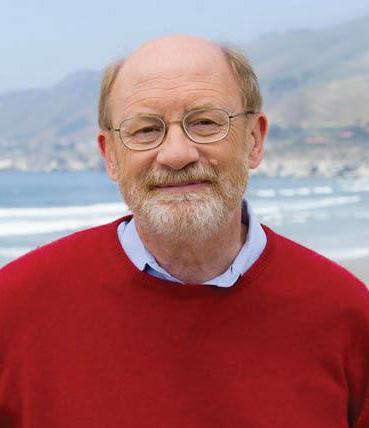
John Laird
When State Sen. John Laird (D-District 17) met recently with the Gilroy Rotary members, he navigated through the highs and lows of his eventful year, describing legislative triumphs in Sacramento as well as the challenges posed by the relentless storms that battered the coastal regions he represents.
“A year ago was the busiest year I have ever had in state service, but the most productive,” Laird, 73, said at the club’s Oct. 10 meeting at the Gilroy Elks Lodge. “I landed 20 bills on Gov. (Gavin Newsom’s) desk. He signed all but one.”
Elected in 2020, the Democrat represents California’s Senate District 17, which encompasses all of Santa Cruz and San Luis Obispo counties, portions of Monterey County and southern Santa Clara County’s communities Gilroy, Morgan Hill, and San Martin.
In a 30-minute talk including questions, Laird spoke about an effort to fund the construction of student housing at Gavilan College through the Higher Education Student Housing Grant Program. The state program is in its final round, with $200 million still left to be allocated for community colleges, he said.
“I don’t know if Gavilan will qualify to get that,” he said. “But I know it’s my job to go, in the middle of budget craziness . . . to make sure that project gets funded. When I was a community college trustee 30 years ago, you never heard of people being homeless while they were students. People had resources, family members or friends. Now, I go to community colleges and anywhere from 1 to 3 percent of the student body is unhoused, and there is a significant percentage that have housing insecurity.”
Laird covered some of his projects across the district, from the ongoing effort to keep the Diablo Canyon Power Plant open, to the creation of a public health district to purchase the bankrupt Watsonville Community Hospital. The defining challenge of the year, however, was the damage dealt to the coastal regions of District 17 during last winter’s storms.
 “When I went into this year, I thought, ‘Hurray, I get to choose what I want to work on,’ . . . but Mother Nature had different ideas,” he said. “The Central Coast was slammed almost as hard as any other place in the state with 12 storms in a row, and we had incredible damage on the coast.”
“When I went into this year, I thought, ‘Hurray, I get to choose what I want to work on,’ . . . but Mother Nature had different ideas,” he said. “The Central Coast was slammed almost as hard as any other place in the state with 12 storms in a row, and we had incredible damage on the coast.”
From Santa Cruz to Capitola, businesses swamped with water as levees and seawalls collapsed. The historic S.S. Palo Alto, a permanently grounded concrete ship and local landmark, sank beneath the waves, destroying the pier at Seacliff Beach in Aptos. Water submerged homes and farmland in Watsonville when the levee in the community of Pajaro broke, forcing the evacuation of thousands of residents.
“That was heartbreaking for another reason,” Laird said. “We had worked so hard for a number of years to get a new levee project there. Pajaro could not afford (to fund the project), so the state managed to buy out the infrastructure at the federal level. The money was released, and then the voters taxed themselves in the Pajaro Valley for the operations. A year ago, we celebrated a fully funded levee project after decades of trying . . . but we just couldn’t get there in time.”
After the floods, Laird partnered with District 29 Assemblymember Robert Rivas to co-author a bill to expedite the last environmental review for the levee project. They hope to break ground on the project “the minute the rains are over,” he said.
Laird reminded Gilroy Rotarians he has a year left as their state senator. As a result of redistricting, after December 2024, his constituency will no longer include Santa Clara County.
“I represent you until the last day of my term, regardless of where I might be running next,” he said. “I am trying to pay attention and make sure that everybody feels represented here. Dave Cortese’s district will move into here a year from December. I have already talked to him, and we are trying to make sure that there is a seamless transfer.”
Calvin Nuttall is a Morgan Hill-based freelance reporter.


